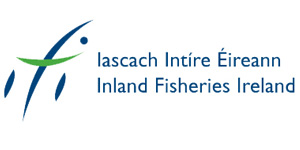Fish Stock Survey of Lough Mask, July 2022
Lough Mask is situated north of Lough Corrib, adjacent to the town of Ballinrobe, Co. Mayo (Plate 1.1, Figure 1.1). It is the sixth largest lake in Ireland with a surface area of approximately 8,218ha. The length of the lake from north to south is approximately 16km and the width is approximately 6.4km at its widest point (O’ Reilly, 2007). The main rivers flowing into Lough Mask are the Cloon, Robe, Owenbrin, Finny, Glensaul, Glentraig and the Keel River, which is the out flowing river from Lough Carra. Lough Mask is linked to Lough Corrib by the Cong Canal.
Lough Mask is generally a shallow lake with a mean depth of 5m; however, it attains a maximum depth of 57m along a narrow trench on the western shore of the lake (NPWS, 2015). The lake is categorised as typology class 12 (as designated by the EPA for the purposes of the Water Framework Directive (WFD)), i.e., deep (>4m), greater than 50ha and high alkalinity (>100mg/l CaCO3). The underlying geology of Lough Mask is Carboniferous limestone, with areas of shale and sandstone, and it is an example of a lowland oligotrophic lake (NPWS, 2015).
Lough Mask, Carra and Cloon make up the Lough Carra/Lough Mask Special Area of Conservation (SAC) complex. Six habitats listed on Annex I of the EU Habitats Directive are found in this site, including two priority habitats – limestone pavement and Cladium fen (NPWS, 2015). This is also an important SAC for otter (Lutra lutra), a species that is listed on Annex II of the E.U. Habitats Directive (NPWS, 2015).
The zebra mussel (Dreissena polymorpha), an invasive species in Ireland, was confirmed to be present in Lough Mask in 2008. Roach (Rutilus rutilus), a non-native species subject to restrictions under Regulations 49 and 50 of the European Communities (Birds and Natural Habitats) Regulations 2011 (S.I. 477 of 2011) was first recorded in a fish stock assessment survey on the lake in 1996, since then the population has spread throughout the lake. Bream (Abramis brama) was first recorded in fish stock surveys in 2009, which has led to hybridisation with roach. Bream and roach x bream hybrids have been removed from the lake each spring in recent years.
Lough Mask is noted for its populations of brown trout (Salmo trutta) and ferox trout (Salmo trutta), with the average size of brown trout ranging from 0.6kg to 1.4kg. The largest ferox trout can reach up to 9kg in weight (O’ Reilly, 2007).
The lake was surveyed in 1996 as part of Inland Fisheries Ireland’s (IFI) brown trout stock assessment programme using seven-panel benthic braided survey gill nets. Five fish species were recorded at that time; brown trout, Arctic char (Salvelinus alpinus), pike (Esox lucius), perch (Perca fluviatilis), and a single roach (O’ Grady et al., 1996). More recently the lake was surveyed by IFI for the WFD fish Monitoring programme in 2009, 2012, 2015 and 2019 (Kelly et al., 2010, 2013, 2016 and Corcoran et al. 2020). During these surveys, perch, roach, brown trout, bream, Arctic char, eels (Anguilla anguilla), pike, stone loach (Barbatula barbatula), three-spined stickleback (Gasterosteus aculeatus), ninespined tickleback (Pungitius pungitius) and roach x bream hybrids (Rutilus rutilus x Abramis brama) were recorded.
This report summarises the results of the 2022 fish stock survey carried out on the lake using Inland Fisheries Ireland’s fish in lakes monitoring protocol. The protocol is WFD compliant and provides insight into fish stock status in the lake.
Topics: Lake Surveys 2022 , Lough Mask |
